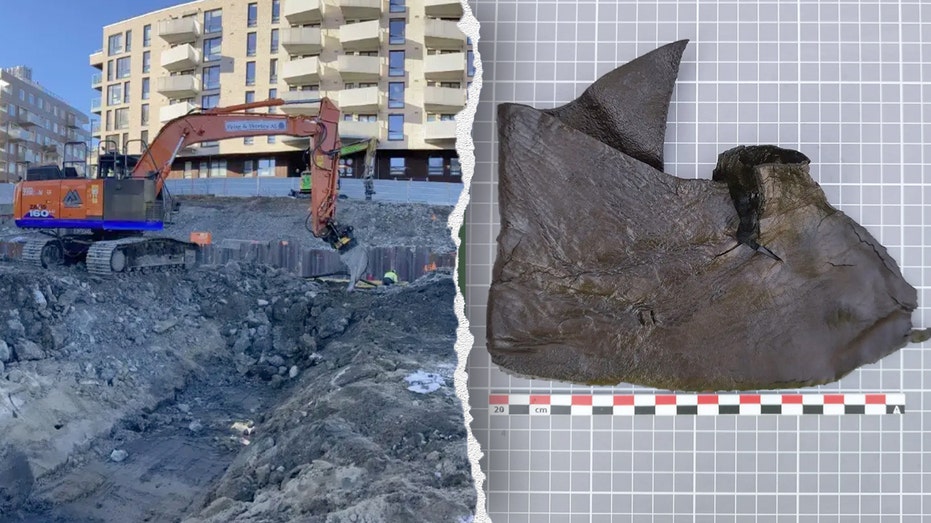Archaeologists stunned by rare medieval shoes and bags hiding under capital city
Archaeologists in Norways capital have unearthed thousands of leather artifacts that offer a rare glimpse into Oslo's past and the fashion of its medieval inhabitants.The findings were recently announced by the Norwegian Maritime Museum. Experts from the museum as well as others from the Norwegian Institute for Cultural Heritage Research conducted excavations in the port district of Bjrvika over last winter and spring.Bjrvika was originally underwater during medieval times, but landfill across the centuries gradually turned it into dry land.SURPRISED ARCHAEOLOGISTS UNEARTH ANCIENT GRAVES CAUGHT BETWEEN PAGAN, CHRISTIAN RITUALS IN POLANDResearchers expected some historic finds ahead of their work but they didn't know they'd find thousands of leather artifacts in such a relatively small area.Archaeologist Marja-Liisa P. Grue with the maritime museum told Fox News Digital the excavators found 2,900 objects, including 2,700 pieces of leather."This is in addition to around 3,000 bones, which are food waste," she said."From some of the layers we investigated, we were just continuously picking bone and leather pieces."RARE CHRISTIAN CROSS AMONG SPECTACULAR 1,000-YEAR-OLD VIKING TREASURES FOUND BY METAL DETECTORISTSHistoric leather is a rare gem, as the material is quick to corrode. The artifacts survived the centuries thanks to the clay soil beneath Oslo's city center, the experts said."After the leather objects ended up at the sea bottom, they were pretty quickly covered and have ended up lying in moist and oxygen-deprived masses for hundreds of years," Grue noted."These conditions are good for the preservation of organic material like leather, limiting decay The result is really well-preserved leather objects, some with clear traces of decorations, extensive repairs and so on."The finds spanned a vast period of time.The top layers held leather goods from the 1900s, but instead of uncovering traces from the 1800s, 1700s and 1600s like in nearby digs, archaeologists jumped straight from the late 19th century to the Middle Ages.VIKING-ERA BURIAL SITE WITH ELITE FAMILY TREASURES AND GIFTS DISCOVERED, PLUS AN 'UNUSUAL CASKET'"At the current excavated area, we can follow the layers down to the late 19th century before we start finding [artifacts] typologically dated to the 13th to 15th century," Grue added."Now the investigation will start [to determine] why we appear to be missing around 400 years of history in an area we know [was] used for travel up the nearby river at least to the first part of the 19th century."Grue noted that Oslo's conditions have made it possible to preserve significant amounts of leather."It is not very rare to find well-preserved leather, because of good preservation conditions for organic material, especially close by the citys old harbor area," she said.UNEARTHED ANCIENT ROMAN SHOES DRAW 'IMPRESSED GASPS' AFTER BEING BURIED FOR 2,000 YEARS"Still, the amount of leather objects compared to the size of the field is a lot more than we expected to find."In contrast, nearby fields tend to yield mostly ceramics and in much smaller numbers."The objects seem to have been transported to the place we found them by the nearby Alnaelva River," Grue said. "[They were] mostly made from materials that float well, like leather, bone and wood."The discoveries, Grue added, appear to have belonged to upper-class medieval Osloans. The items included decorated shoes, purses, sword sheaths and blades.They also found bags, which were necessary, since medieval clothes did not have pockets.CLICK HERE TO SIGN UP FOR OUR LIFESTYLE NEWSLETTER"This can help shed light on the fashion in the city at the time," she said. "Yet, more interesting is the everyday material that sheds light on everyday people and their habits.""The shoe material shows a society where nothing appears to have been thrown away before it was used," he said. Items were "repaired, repaired again and then [the parts] reused that could still be used."For more Lifestyle articles, visit foxnews.com/lifestyleOf all the shoes found, 68 belonged to children the tiny shoes and boots offering a rare glimpse into medieval childhood."The cutest stories are the small kids shoes, down to the size of a one-year-old, where we see the tiny shoes made in the same styles as the grownups, and then the shoes are refitted for use by new children as long as possible," said Grue.The leather finds follow other clothing-related discoveries in Scandinavia, including the grave of a Viking in Sweden.When inspecting the grave, archaeologists found that there were "remnants of textile, likely from a garment."




